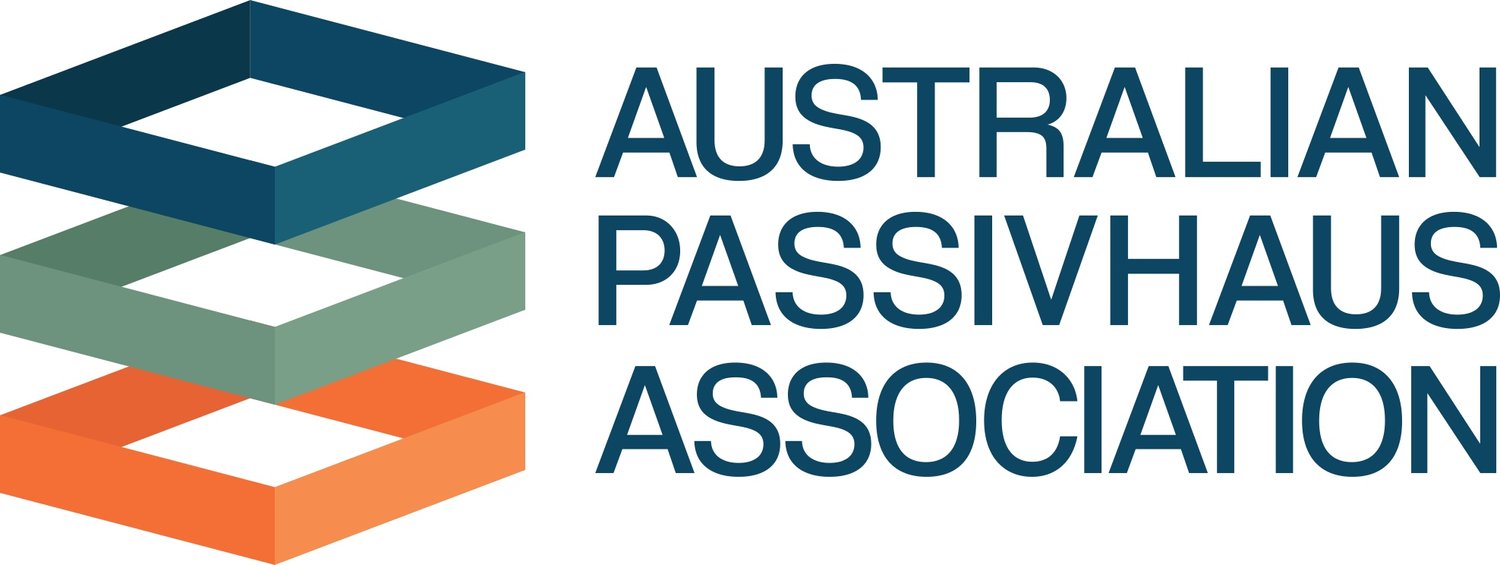PASSIVBLOG Behind the Scenes of the Ice Box Challenge Sydney
Behind the Scenes of the Ice Box Challenge Sydney
APHA's Rachael Alden sat down with APHA CEO, Paul Wall, and the teams behind the creation of the boxes, Eclipse Passive House and Gaea Architects, to get an overview of the process and inspiration for the uniquely Australian structures, and why they have chosen Passive House as their way forward.
Paul, you were onsite at the box build in Martin Place yesterday and are at the launch of the Ice Box Challenge today. What are your thoughts on the finished product?
PW: I am absolutely thrilled with the result of the many weeks of hard work and dedication by the teams involved. The APHA team is so grateful to Sue Connor of Gaea Architects for the beautiful and uniquely Australian design of the boxes, and the expert craftsmanship so clearly displayed in the build by Darryn Parkinson of Eclipse Passive House. Sue, Darren, and their teams have done an amazing job and the months of planning, designing, and building the boxes has paid off with what is going to be the most effective demonstration to the wider community of how Passive House is the best way forward for healthy, low energy, comfortable, and resilient buildings.
APHA CEO, Paul Wall, with Darryn Parkinson of Eclipse Passive House, setting up the ice boxes in Martin Place
Sue, the ice boxes are such a unique design, different to the shapes that we have seen at other events around the world. How did you develop the design concept?
SC: The boxes are positioned on a platform to reinforce the sense of arrival, with the shape of these two structures inspired by the small, temporary shelter of a gunyah or wurley (wurly or wurlie).
The canopy roof consists of three pentagons ‘sheets’ covered in corrugated iron. These reference the Australian vernacular and Sacred Geometry - the cube (1m3 of ice) sitting inside is also a platonic solid.
The ‘pegs’ reference tent structures as I previously mentioned. The prefabricated construction by Eclipse Passive House minimises wastage and results in a high-quality construction outcome. The use of timber as a renewable, natural, non-toxic material, is respectful of the earth and its inhabitants. The black cladding reminds us of the bush fires that are so much a part of life in this country.
How did you incorporate the Australian spirit into your design?
SC: As the Ice Box challenge is a world-wide initiative, we felt it was important create a little structure that was uniquely Australian. We considered what it means to be Australian in both a historical and an environmental context. We felt inspired by the inherent wisdom of the Australian First Nations People, new Australians and temporary structures e.g. tents of gold rush, war time, depression, and immigration, modern day simple tents to allow connection with nature, be it the bush or beach, early vernacular architecture – the simple, cheap corrugated iron clad tin shed, and our climate of extremes.
Australian weatherboard structure with a tin roof built in 1871
The Ice Boxes themselves, while small scale, are in fact proper building structures - one built to typical building standards and the other to the Passive House Standard. What does a building represent to you and how is this incorporated into the design process?
SC: A building ideally has the following functions:
Provision of shelter/ protection from harsh weather elements
Thermal comfort
To touch the earth lightly by considering:
The Construction Method: Minimise excavation and material usage and waste with prefabricated construction
Natural Materials: No ‘off gassing’ of VOC and other chemicals, to allow environmental decomposition back to the earth, for psychological benefits
To reference and incorporate nature to promote well-being
To infuse the structure with the positive free flowing energy (for example sacred geometry)
The Ice Box Challenge enables us to clearly see the how Passive House may outperform (in the functions I have mentioned) to that of a ‘standard’ building in Australia.
Sue, what inspired the name Gaea Architects? What does this mean to you and your practice?
SC: Gaea is a goddess from ancient Greek Mythology (she is important all through ancient human history). She is a personification of the Earth - our mother. I have always had a deep love for nature (our beautiful planet) and thus feel it is super important we do our very best to look after her. Another of my passions is health and wellbeing, so as to allow us to enjoy our time here.
Passive House design and construction was a natural progression from many years of focusing on ecologically sustainable design. It cemented the two passions and represented a merging to create wholistic architectural solutions. So, after almost 30 years of practice, I felt a need to change the business name from ‘Sue Connor Architects’ to ‘Gaea Architects’ to represent the commitment to Passive House and Mother Earth. Passive House design and construction helps the planet by having far less demand on the earth’s resources. The massive savings in energy consumption (for heating and cooling) along with the high standard of construction ensures longevity – far longer than a typical build in Australia. A Passive House building is wonderfully comfortable and free of mould/condensation issues which promotes our wellbeing.
Darryn, what can you tell us about the ice box building process?
DP: The design from Sue Connor at Gaea Architects is quite complex geometry, which proved quite challenging to CAD detail and to manufacture. However, we are very happy with the result. The design clearly demonstrates that architecturally creative buildings can be built to the Passive House standard.
What were some of the major differences in the building process when creating the two boxes side by side - one to the Passive House Standard and the other to a typical building standard?
DP: Building the two Ice Boxes side by side has clearly highlighted major differences between the construction standards for a Passive House building and an Australia standard code-built building. Apart from the difference in thermal performance, the major difference is in the quality of the construction and attention to detail. The differences are stark, including:
Windows
The standard code box window is single glazed with a non-thermally broken frame. The Passive House has an aluclad thermally efficient timber frame with double glazing.
The standard code box window installation relies on a plastic perimeter flashing simply stapled or nailed in place in order to prevent water and air penetrating the building envelope. The Passive House window is fully taped and sealed in place to create a fully watertight and airtight installation.
The standard code box window has clearance gaps around the window in the timber frame which are left uninsulated creating thermal inefficiencies. The Passive House window is tight fitting with no clearance gaps.
Cladding
The standard code box external walls have a perforated sarking wrap simply lapped and fastened to the timber frame, this would not create a water or wind tight building envelope. The Passive House has a high-performance weather resistive barrier installed which is fully taped and sealed to ensure a watertight and airtight building envelope.
The standard code box external walls have the external cladding fixed directly to the timber frame, which does not provide any control of moisture or condensation that may be developed in the building envelope. The Passive House has a fully drained and ventilated cavity between the external wall frames and the cladding.
Darryn, can you tell us about how you came across Passive House and why you have chosen it as the way forward for your business?
DP: We came to Passive House out of a desire to build the highest quality and best forming buildings possible. We were previously site building high performance houses and chose to set up our prefabrication manufacturing facility in Sydney to provide greater efficiency to the construction of Passive Houses.
The boxes being lifted onto the ice blocks with the help of our sponsors, Eclipse Passive House and Reach Crane Trucks.
One tonne of ice for each box for a fortnight - which box will have the most ice left in the big reveal?
The finished boxes ready for the Ice Box Challenge!
APHA CEO, Paul Wall, with the teams from Eclipse Passive House and Reach Crane Trucks after installation of the ice boxes.
The Ice Box Challenge was on display from 21 February to 4 March 2022 in Martin Place, Sydney CBD. We hope you enjoyed our event! Where should the Ice Box Challenge land in Australia next?
Our Gold Sponsor, Reach Crane Trucks, shared time lapse footage of the erection of the prefabricated structures after they had been built in the eclipse passive house factory. Take a look below!
DEFINITIONS - GAEA ARCHITECTS
Sacred Geometry: Sacred geometric patterns exist all around us, creating the fundamental structure and templates of life in the universe.
The patterns can be broken down into a language of mathematics that rules the entirety of our visible and invisible world.
The geometrical archetypes reveal the nature of each form and its vibrational resonance, symbolising the inseparable relationship between everything and everyone, which ultimately makes up our whole matrix and the universe at large – embodying oneness.
It is said that every natural pattern of growth or movement comes back to one or more geometric shapes.













